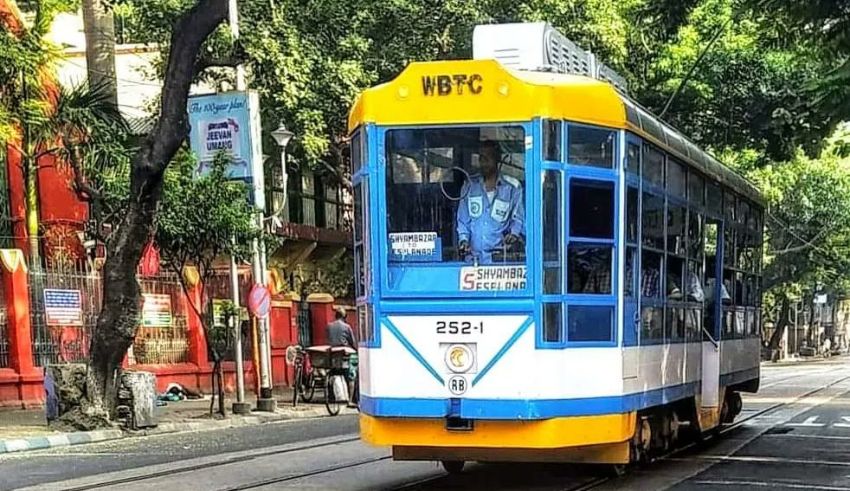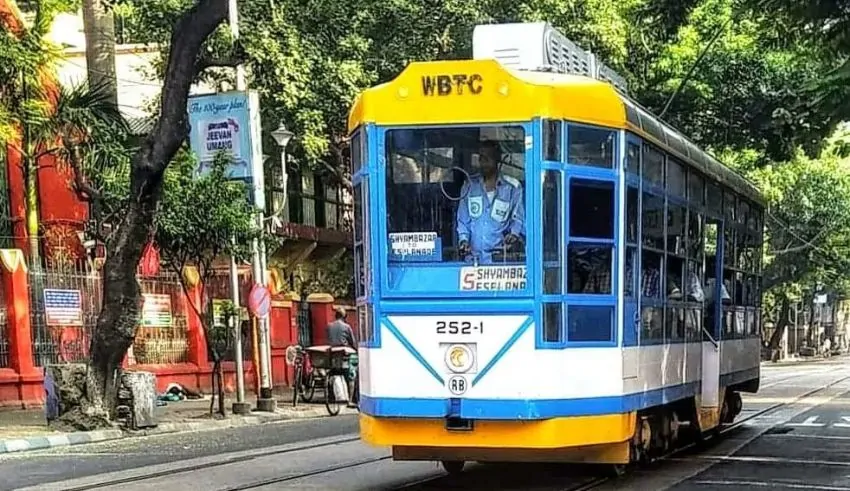

(C) Erik Solheim/X
Deep Das, eighteen, finds his happiest moment of the day right in the middle of Kolkata, where the quiet clang of a tram bell breaks through the daily hum of the metropolis. Das always waits for the tram, that slow-moving emblem of the rich past of the city, even among the sea of buses and cabs within his reach. “There were times when there were frequent buses,” he says, “but I still waited for the trams.”
These electric-powered cars have been whirling around Kolkata’s streets for more than 150 years, following the city’s development from the days of British control to its modern reputation. Even with their great historical importance and the love they engender, Kolkata’s cherished tram system is today on the brink of extinction.
Years of neglect have caused the steady collapse of the tram system. Once a busy network with hundreds of paths, it has dropped to only two. Once the veins of the metropolis, the railroads today are essentially relics from the past. Still, for some the battle to save these trams is far from finished.
Along with a group of other aficionados called the Calcutta Tram Users’ Association (CTUA), Das is committed to safeguarding this soulful legacy of Kolkata. Under the direction of retired scientist Debashish Bhattacharyya, the CTUA sees the trams as more than just transportation—they represent an answer to the city’s rising need for reasonably priced, environmentally friendly transit.
Trams, according to Bhattacharyya, offer the city a neglected, reasonably priced choice. “Your required investment is minimum,” he says. Bhattacharyya feels the officials in the city have missed the financial and environmental advantages of maintaining the system intact as trams with minimal running costs have a lifespan of 50 to 80 years. Trams are a long-term investment unlike buses, which only last five to ten years, he contends.
For many, the trams reflect the very soul of the city rather than only a means of mobility. “This is the only city in India having tramways,” notes Bhattacharyya. “This glory—not only of the city but of the nation—will be lost if this is taken away.” These trams, which snake through Kolkata’s little streets, past busy markets, and even avoid the sporadic wandering cow, have become emblematic of the city with their brilliant blue and white stripes and sunshine-yellow roofs.
The trams of Kolkata have as old a history as the city itself. Originally launched under British control in 1873, the trams began as horse-drawn carriages before switching to steam power and lastly became electric in 1900. These single-story cars go slowly, at 20 kilometers per hour, across the city’s famed traffic congestion today. For travellers, a tram ride provides a view of the colonial past of the city, therefore acting as a trip through time.
Though charming, the trams’ future seems dubious. Although the West Bengal Transport Corporation claims trams are affordable, safe, and able to carry five times more passengers than buses, their dropping count presents a depressing picture. Despite their excellent price of just seven rupees, many commuters are selecting speedier options as the trams have grown unreliable and their timetables irregular.
For some, like 54-year-old instructor Ram Singh, a tram ride marks a trip down memory lane. Singh recalls his early years, when daily Kolkata life depended much on the trams. He remembers riding trams, getting off after one or two stops, and then getting back on without paying. He laughs. “It was our method of enjoying the ride without having to pay a ticket.”
The trams nowadays are relics of a time gone by. At one location, scores of railcars lie abandoned, rusting away; some date back as far as the 1940s. Though their once-vibrant colors have faded and their tracks are overgrown, for residents like Singh and Das the trams remain a priceless aspect of the city’s past.
Das and the CTUA are not going to give up in face of difficulties. They distribute posters, call community meetings, and aim to increase awareness of the need of maintaining Kolkata’s trams. Still, there is a serious fight. Das regularly deals with failures, power problems, and continual reminders that the end may be close. Still, his passion for the trams fuels him. “I love my trams more than I love myself,” he exclaims fervorously. I will do everything practical.
There are people who think that history and modernity can coexist as Kolkata rushes toward change. Singh says, “Cities should develop; but, history should also be preserved along with it.” Though it is a relic of the past, if the struggle keeps on the tram system could be a part of the city’s future.
For Das and the CTUA members, the ringing bell of a tram is not only a sound but also a call to action, a reminder that history is worth preserving, and a hope symbol for a city that respects its past.
Cricket fans, rejoice! The Olympic Council of Asia (OCA) has confirmed that cricket will be part of the 2026 Asian…
With economic growth fueled by families, Asia's stronghold will soon be on Bloomberg's list of Asia's richest families in the…
Malaysia has reached a historic milestone by ranking number one in the global Open Data Inventory (Odin) 2024/25, thanks to…
For Nogizaka46 fans, this May is going to offer a great opportunity to watch as their 6th Generation Members are…
The dual relationship between Malaysia and the Myanmar junta and National Unity Government (NUG) establishes a vital shift in how…
BLACKPINK's Lisa Declines to Perform at Miss Universe 2025 BLACKPINK's Lisa, who recently stole the limelight at the 2025 Coachella…
This website uses cookies.
Read More